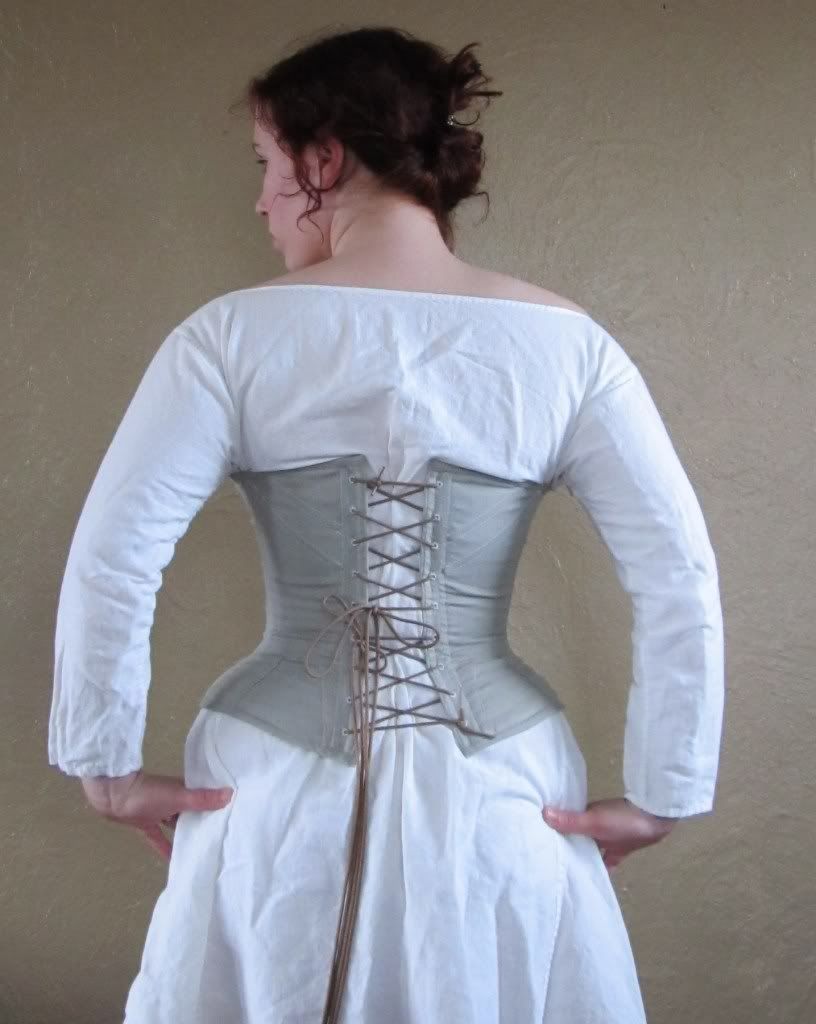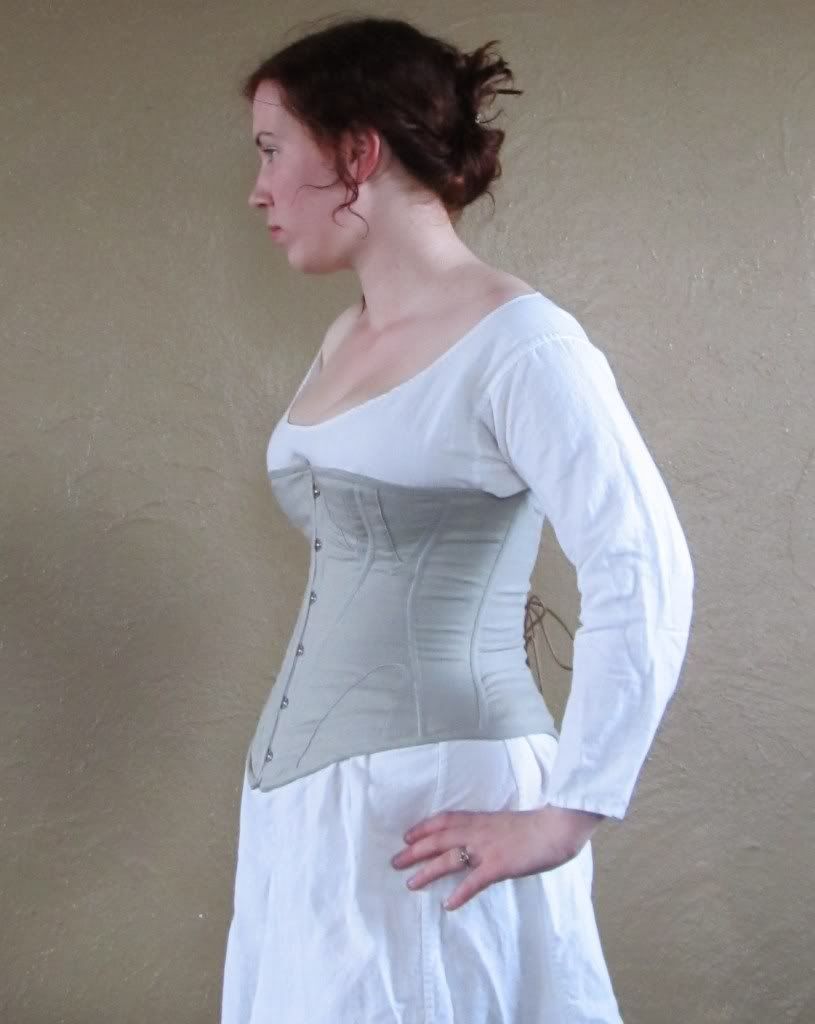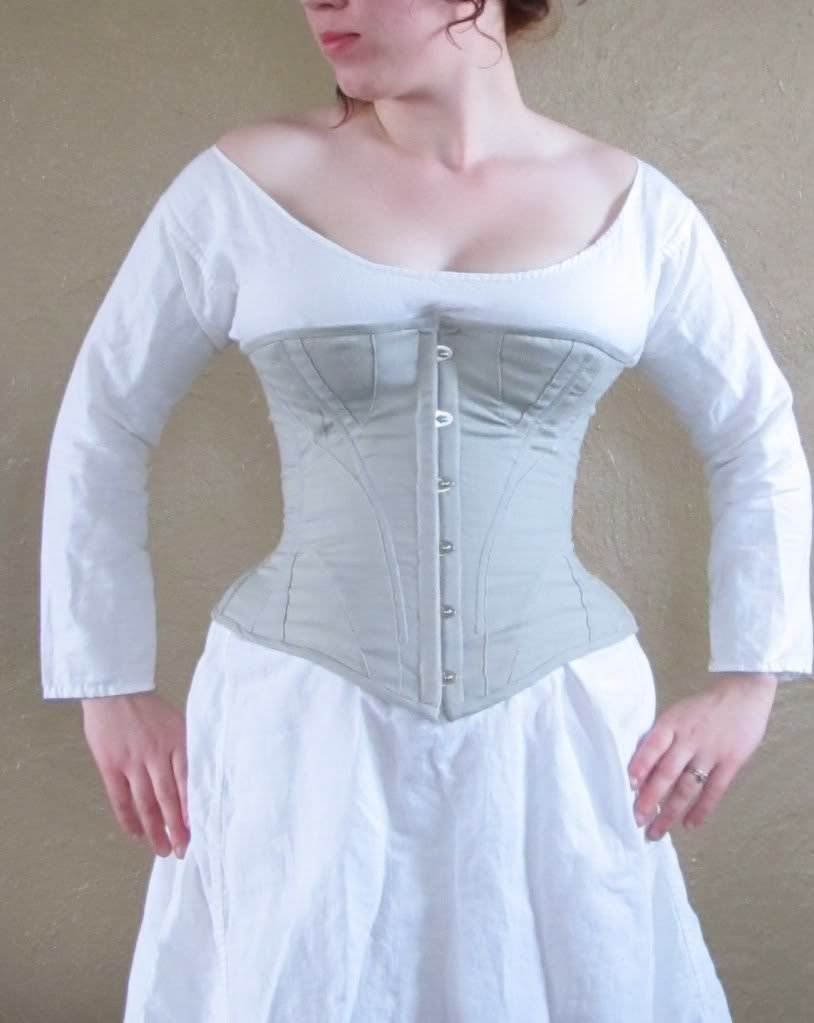I like it - it's comfortable - but it definitely is giving a different shape than my last corset. More - what shall we say - choppy? There's the waist. Then POUF! - there's the bust! And POUF! - there's the hips! It will take some getting used to. I hope it works with my old dresses. I haven't tried one on yet to know for sure, but I *really* hope I don't have to sit down and do alterations to all my dresses. . .I detest alterations!
On to happy fitting days ahead, and progress on the Gray Silk Ballgown. :) Oh, and sorry for the medieval shift making yet another appearance in an era it does not belong in, but I need to make new 1860's chemises as the yoked ones I have do NOT work with this corset. So, for now, it will suffice.
Sarah




Sarah - I really like the look on you, but I know what you mean about a different sort of shape than the last one. It seems more cylindrical than your other 1860's corset, and less hour-glass. I'm not an 1860's expert by any means, but I assume there are variations on the basic shape. It certainly looks great on you, and your craftsmanship is amazing, as always. I don't like alterations either, so I hope you don't have to do much on your dresses. As long as you are comfortable in it, and it works with your dresses, I say don't worry about the shape too much.
ReplyDeleteYes, Jenni, that is a good descriptive word. The torso IS quite cynlindrical, with less of a sloping shape from the waist to the bust and then the hips. The bust and hips spring out more all-of-a-sudden. This is from a corset pattern published in 1867, (Kay Gnagney then made it for the Simplicity pattern company) so I'd think it would be more representative of the 60's style than perhaps the Dore corset (the one I've used before) which seems to give more of a generic "Victorian" shape.
ReplyDeleteIf all else fails, I can use the corset from here on out for new dresses, and make one based on the Dore corest to wear with my old ones. . .;) Any excuse for a new corset! :)
Corsets in the 1860s were shorter and had less of a need to slim the waist because of the volume of the skirts. Also medical discoveries about their damage caused women to wear them less tightly (though that did not last).
DeleteLovely! I really like the shape it gives you. It lengthens you waist. You looke goregous!
ReplyDeleteIt's very pretty! I dont know how you sewed a corset in such a short period of time!!! Amazing. :) It's a beautiful corset -- but you're right; it's definitely a different shape.
ReplyDeleteOh, I forgot to ask did you use steel boning in this one? If so, how do you like it?
ReplyDeleteYes, I used the corset kit offered by Kay and included was the steel busk and boning needed for this style. So at the back on either side of the eyelets, and also the slanted bits of boning at the back, there is spring steel. The rest is spiral steel, which does a suprising good job of supporting. It seems so flimsy to handle it, but it curves quite well, without buckling and is light as a feather to wear. Thanks for the inspiration Jenni! :) I wouldn't have used the steels for this one if it hadn't been for you, most likely!
ReplyDeleteIt looks lovely, Sarah! It's certainly a more... abrupt?... shape change than my Silverado gives but it looks very authentic. And I'm so impressed that you manage to sew so quickly, especially with three little boys! I can't wait to see your silk ballgown :-)
ReplyDeleteI love the shape this corset gives! Very nice! I think it looks way more 'period' then the other styles. :) Can't wait to try one for myself. :P
ReplyDeleteI nreally want to make a 1860s ooutfit.. The shape of this corset is so beautiful! Where did you get the pattern?
ReplyDelete